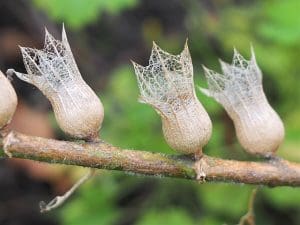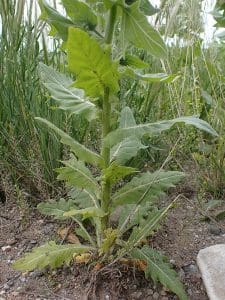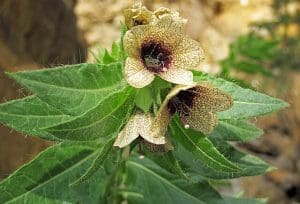Henbane / Spring / Summer / Autumn / Toxic
Henbane is a poisonous plant in the nightshade family (Solanaceae) it is native to temperate Europe, and naturalised in Great Britain and Ireland. It’s a shrubby biennial that grows up to 1m tall. The whole plant is very hairy, very sticky and produces a horrible smell.
Common Names
Black Henbane and Stinking Nightshade
Botanical Name
Hyoscyamus Niger
Scientific Classification
Kingdom: Plantae
Order: Solanales
Family: Solanaceae
Physical Characteristics of Henbane
Leaves
The leaves are green, hairy, between 10 and 20 cm long with up to 3 lobes and they have a pointed tip. In the second year they grow in two rows on either side of the stem.
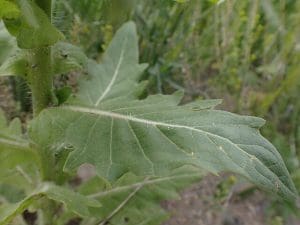
Flowers
The flowers are 2 to 3 cm across and are creamy-yellow and funnel-shaped with dark purplish centres.
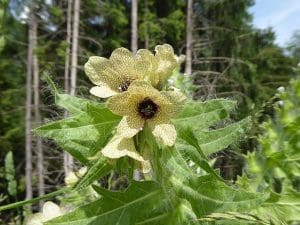
Fruit
The fruit looks like a small green tomato, about 10-20mm in diameter, which will turn black when ripe.
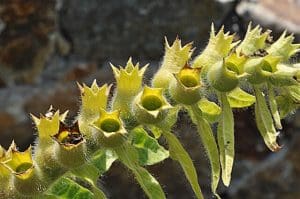
Habitat
Henbane often grows around long-inhabited areas and old fortifications. It is sometimes found on waste ground and prefers sandy soils.
It’s quite common in the south and east of England but rare elsewhere.
Known Hazards
All parts of the plant are poisonous.
High doses of Henbane can cause delirium, seizures, irregular heartbeat, and a painful death.
Could be Confused with
Celebrity chef Antony Worrall Thompson accidentally recommended henbane as a “tasty addition to salads” in a magazine after mistaking it for Fen Hen, but Henbane looks unlike anything else really, it’s so distinctive, it definitely doesn’t look like Fat Hen.
Edible Uses
This plant is not edible and all parts are toxic to most animals but pigs are immune to the toxicity and are reported to enjoy the effects of the plant.
Notes on Herbal Uses
Henbane has a long and fascinating history but it should not be carelessly.
It contains chemicals, such as hyoscyamine and scopolamine, which may help to relax the muscles lining the digestive tract. The plant is also used to relieve muscle tremors and have a calming effect. If doses are too high, these chemicals can be poisonous.
Historically it was used in combination with other plants, as an anesthetic potion, and for its psychoactive properties in “magic brews”. These psychoactive properties include visual hallucinations and a sensation of flight.
Extra notes from the Foragers
Hamlet’s uncle Claudius poured a Henbane tincture of the “cursed hebenon” into Hamlet’s father’s ear to murder him.



